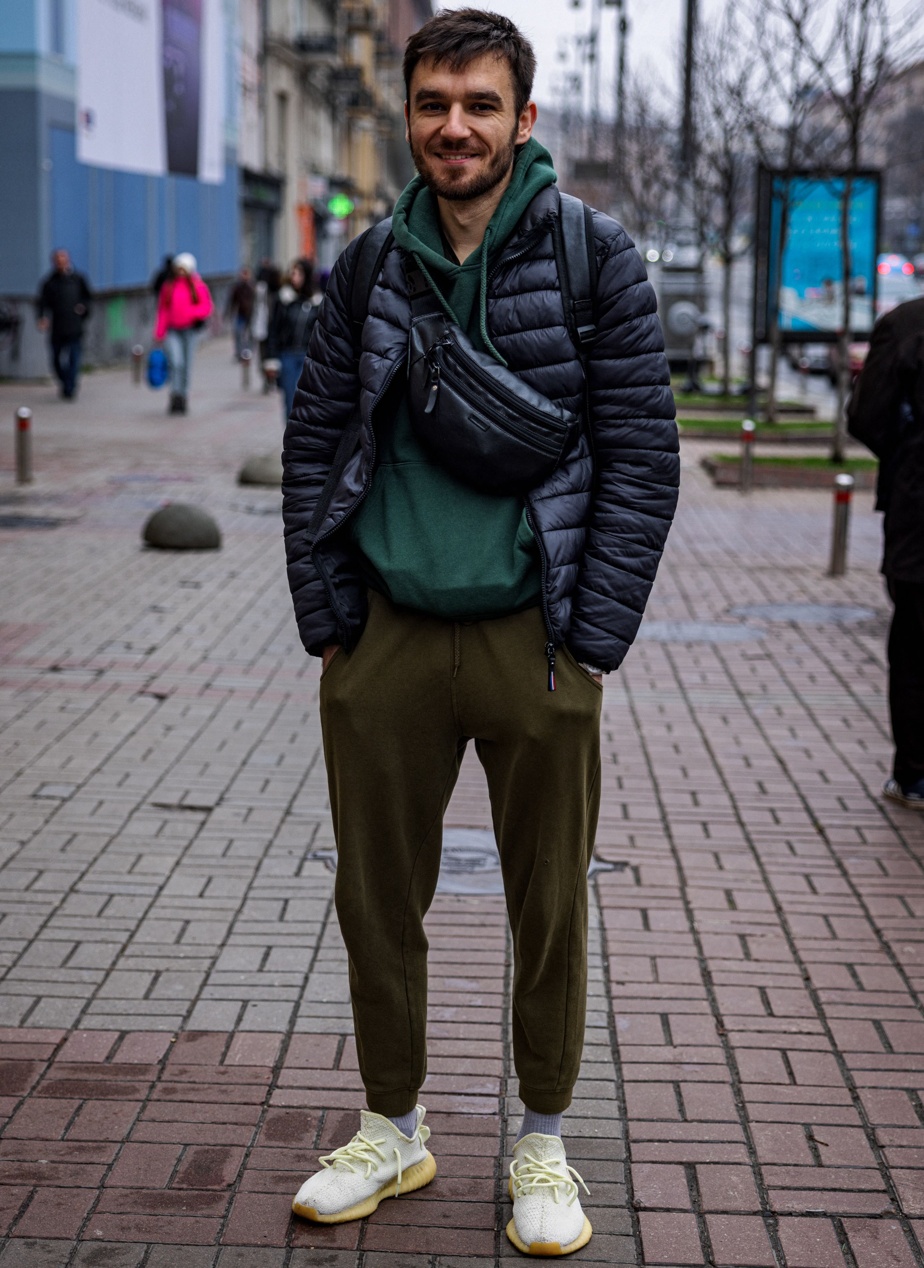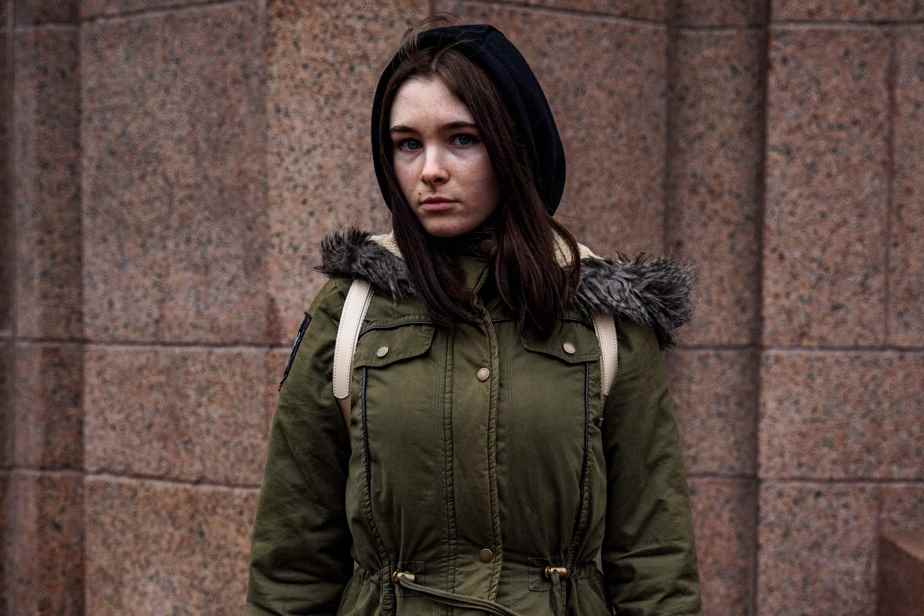(Kyiv) Volodymyr Zelensky “national influencer”, is the first to have set the tone: khaki. In eight months of war, Ukraine has largely adopted the president’s dress code, even among civilians, transforming clothing into a weapon of communication.
Posted at 10:35 a.m.
Since the first day of the war, the Ukrainian president has swapped his costumes, not for the Ukrainian military uniform that martial law nevertheless authorizes him to wear as head of the armies, but for a civilian version of the uniform of war.
In detail: a mostly olive t-shirt, which reveals his biceps, topped in winter with a zipped or hooded fleece, trellis or cargo pants and sneakers on the feet, most often khaki too.

PHOTO DANIEL ROLAND, AGENCE FRANCE-PRESSE ARCHIVES
Ukrainian President Volodymyr Zelensky and his famous khaki t-shirt that shows his biceps
“A message of simplicity, which says ‘my country is fighting and I am wearing the same thing as the people who go down to the shelters, simple and practical'”, analyzes for AFP Tania Soloveï, researcher in fashion history in Ukraine and former journalist at Vogue Ukraine. Sneakers at several hundred euros nevertheless.
Since the first day of the war and the general mobilization imposed on men aged 18 to 60 on February 25, in the cities of Ukraine military green is now adopted en masse by civilians.
“A lot of people have started wearing khaki clothes, associated with the army, which allows us to remember what is happening and to help in our own way,” Denys, 30, a real estate agent in Kyiv, told Kyiv. his designer khaki parka.
For women too, the trend ranges from small accessories, even manicures to “total looks”.
In the center of Kyiv, Svitlana, 62, went out on this foggy morning in jogging and khaki sweatshirt, the color chosen because “the period wants it”.
“But not every day because it gets repetitive,” jokes the retiree, who matched her look with a candy pink sleeveless puffer jacket.
Forbidden to civilians

PHOTO DIMITAR DILKOFF, AGENCE FRANCE-PRESSE
In Kyiv, the Aviatsiya Halychyny clothing line, which donates part of its profits to army brigades, is stocking up with these t-shirts in tribute to the heroes of Mariupol or anti-Russian messages.
“Khaki has always been a popular color in Ukraine, in leisure and outdoor clothing. But now more than a style, it’s the visual identity of an entire nation at war,” explains fashion journalist Tania Soloveï.
In front of the central post office, Natalia is in khaki from head to toe, from the cap to the elegant quilted jacket and her fitted pants. A look adopted since the beginning of the war, in homage to her husband mobilized at the front.
“It’s the color of the camouflage, the only one that gives me a feeling of protection”, philosophizes the 42-year-old accountant.
In this nation at war, most Ukrainian supermarkets now offer military clothing, intended primarily for soldiers, conscripts and mobilized.
According to Ukrainian martial law, civilians are strictly prohibited from wearing not only military uniforms, but also any other confusingly military-like uniform or clothing.
Violation is punishable by a fine of up to 3,400 hryvnias ($92).
“I like this color, and I have plenty of them too with the camouflage print, but I avoid wearing them so as not to confuse and not to bother our soldiers”, resolved Anastasia Grebinitchenko, high school student 15-year-old from Kyiv, who opted for black this winter.
Embroidery and “Vyshyvanka”

PHOTO DIMITAR DILKOFF, AGENCE FRANCE-PRESSE
“Khaki has always been a popular color in Ukraine, in leisure and outdoor clothing. But now more than a style, it’s the visual identity of an entire nation at war,” explains fashion journalist Tania Soloveï.
In Kyiv, the Aviatsiya Halychyny clothing line, which donates part of its profits to army brigades, is stocking up with these t-shirts in tribute to the heroes of Mariupol or anti-Russian messages.
“Clothes are the simplest vehicle for expressing an opinion,” says Natalia Koulyk, brand manager.
“It’s direct support for our army and an expression of patriotism,” summarizes the manager of a store, herself in fleece with pockets and herringbone of military inspiration.
In Ukraine, the garment became a political symbol in 2004 with the orange ribbons and scarves, the moment of the “Revolution” of the same color against the Kremlin-backed oligarch Viktor Yanukovych.
Then with the Euromaidan movement in 2014 and the beginning of the war against Russia the same year, Ukrainian fashion migrated in an uninhibited way towards “patriotic” clothing, the “trident”, national emblem becoming an essential motif in flocking.
One of the clear trends is the return of a symbol of traditional national identity, “Vyshyvankas”, traditional shirts, normally worn at parties.
“As long as Russia repeats that there is no Ukrainian nation, language and identity, we will defend our culture and our heritage, that is part of this battle,” concludes researcher Tania Soloveï.
